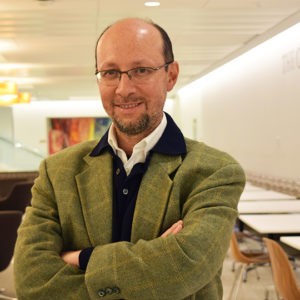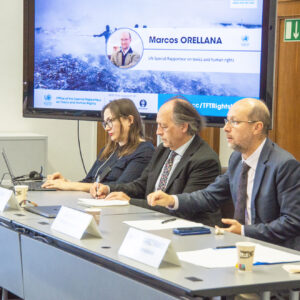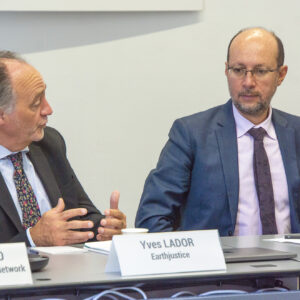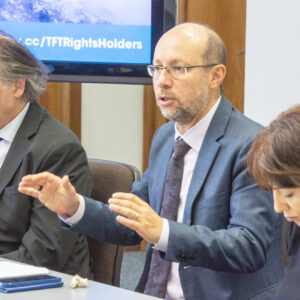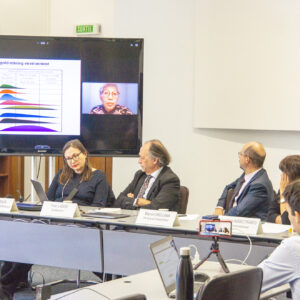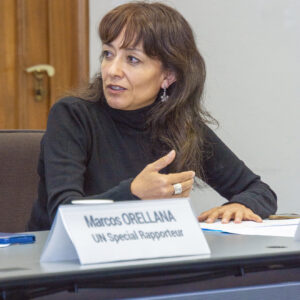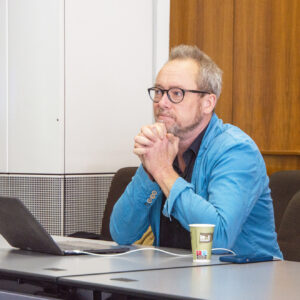Événement Conférence
Rights Holders Facing Toxic Threats | 25 Years of Struggle to be Free from Toxic Threat | Geneva Toxic Free Talks
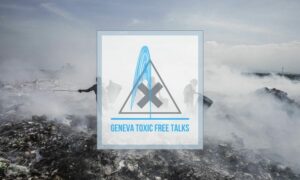
21 Sep 2022
13:30–15:00
Lieu: Centre Administratif de Varembé & Online | Webex
On the sidelines of the 51st Regular Session of the Human Rights Council, this year’s Geneva Toxic Free Talks took place over two days of conferences and discussions, celebrating 25 years of the mandate and the struggle for the right to live in a toxic free environment.

About the Geneva Toxic Free Talks
The Special Rapporteur on toxics and human rights reports every Fall to the Council and to the UN General Assembly on issues related to his mandate. The Geneva Toxic Free Talks aim to harness the opportunity of this moment of the year to reflect on the challenges posed by the production, use and dissemination of toxics and on how Geneva contributes to bringing together the actors working in reversing the toxic tide.
On the sidelines of the 51st session of the Human Rights Council, this year’s Toxic Free Talks took place from 21-22 September — two days of conferences and discussions, celebrating 25 years of the mandate and the struggle for the right to live in a toxic free environment.
About this Session
Many sectors of the population must deal with exposure to toxics affecting their health, their livelihood and even their life, as hazardous substances from human activity are indeed often found in the food people eat, in the air they breathe, in the water they drink, and in the places where they work or live. Their protection depends on the implementation of their fundamental human rights.
Speakers

Yuyun ISMAWATI
Senior Advisor and Co-Founder, Nexus for Health, Environment and Development Foundation (Nexus3) | Lead for ASM and Mining, IPEN

Tatiana SANTOS
Policy Manager for Chemicals & Nanotechnology, European Environmental Bureau (EEB)

Ana Maria SUAREZ FRANCO
Accountability Coordinator & Representative in Geneva, FIAN International
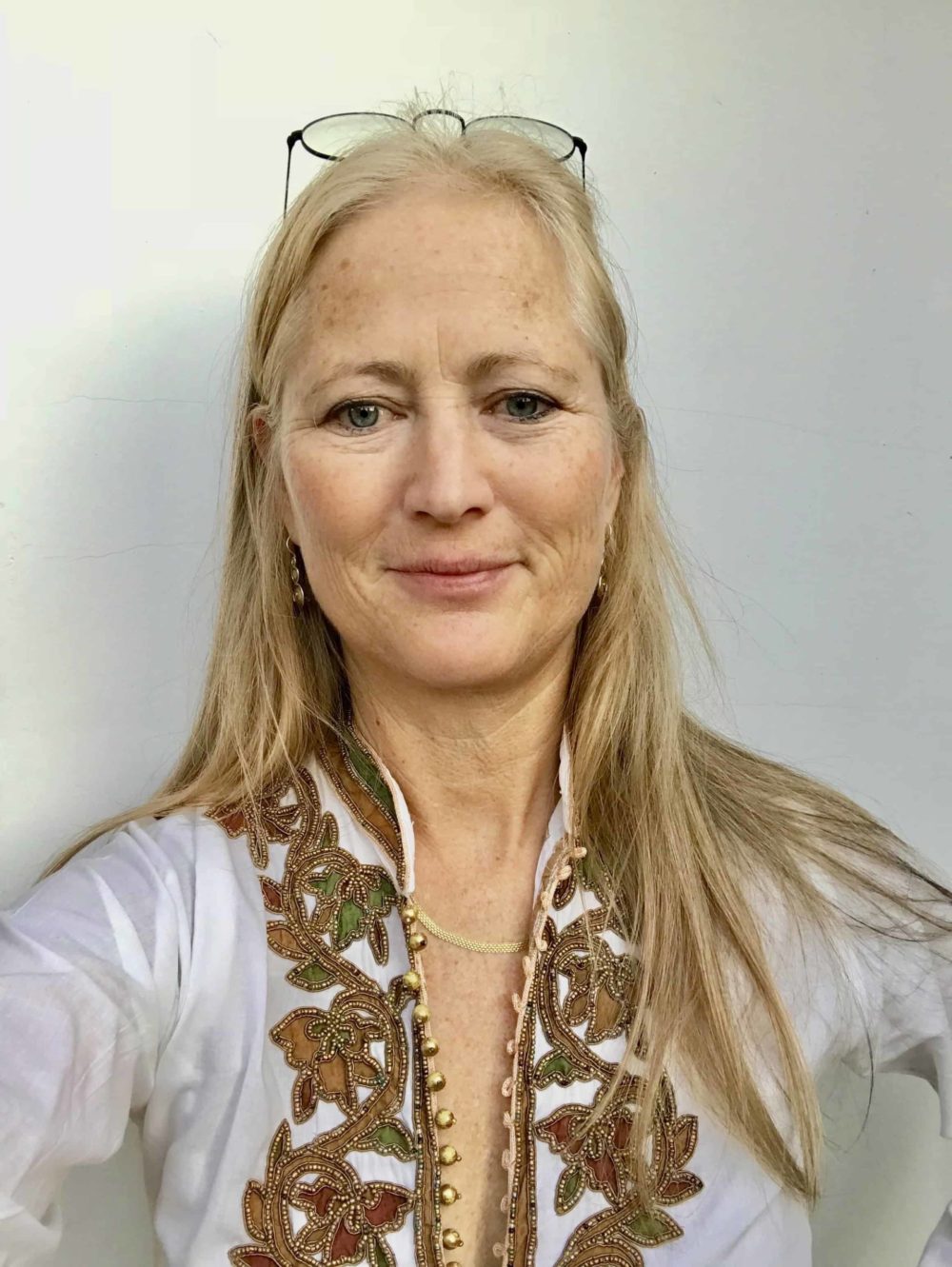
Sascha GABIZON
Executive Director, Women Engage for a Common Future, International
Video
Key Messages
Summary
Welcome
Yves LADOR, Representative of Earthjustice to the United Nations in Geneva
When the mandate started 25 years ago, the toxic issue was far from being something understood and acknowledged. The very first reactions were, “This issue doesn’t belong to the Human Rights Council at all.” It was a long discussion to make sure that the people directly affected by toxic issues are considered and listened to as right holders. The mandate over time showed how the human rights approach can change the way we look at toxic issues and how we try to solve the toxic problem, an element of the triple planetary crisis threatening us now. To fight against this toxic tide, we need to promote the basic rights of the people who are directly affected.
Unfortunately, it was impossible to have with us the constituency of the children’s rights activists. Children are directly affected and some of the most vulnerable towards toxics but there are very strong young actors and activists on that.
Rightsholders, Mercury Pollution in ASMG, and the Rights-based Approach
Yuyun ISMAWATI, Senior Advisor and Co-Founder, Nexus for Health, Environment and Development Foundation (Nexus3) & Lead for ASM and Mining, IPEN
Yuyun is the IPEN (International Pollutants Elimination Network) lead for action on small scale mining. IPEN’s programs work to reduce and eliminate the toxic chemicals, promote stronger international chemicals standards, halt the spread of toxic metals, and lastly build global toxic free movement.
IPEN’s longstanding commitment to eliminating mercury. We have developed what we call a Minamata Declaration as the commitment of the civil society participating organizations of IPEN to work against mercury pollution. In honouring the Minamata victims, we are committed to work for mercury-free planet. Shinobu Sakamoto, a victim of the disease and since the age of fifteen, went to Stockholm to raise the issue. Since then, she became the champion and the voice on Minamata and mercury pollution. During the negotiation meetings, Shinobu repeatedly said that we have to work together to make mercury disappear and not to have people experience the same suffering as her and her friends. With this message she talked to many delegates and to the president of the negotiations at the time. She was with Aileen Smith, the campaigner from Japan.
Mercury pollution is not limited to industrial pollutions, but also in many activities such as artisanal small scale gold mining. Due to the uncontrolled use of mercury to extract gold, mercury in the gold mining environment lasted very long in the environment. We can see this example from the gold rush back in 1849 in the US and in Australia. For example, many gold rush sites became US superfund territories (polluted areas that require a long-term response to clean up hazardous material; contamination in downstream communities will last at least for more than 20 years).
Mercury poisoning appeared in various type of diseases, including metal mercury syndrome. Metal mercury is the most dangerous form of mercury, especially if released into the environment. Mercury can be found in more than two thousand hot spots, according to one study. Compared to 70 years ago, it was only found in one or two places in Japan, but 70 years, after that tragedy, it became more and more visible all over the world. Sources of mercury pollution are not only from industrial activities but also from coal fire pipelines, gold mining activities and manufacturing activities.
Concerning artisanal small scale gold mining, UNEP report shows that mercury emissions from gold mining contributed about 40% of the pollutions globally, due to the use of mercury to extract gold in more than 77 countries. The situation is getting worse after the pandemic because of the pressures or the attractions of gold prices during the pandemic, as it makes people go to the field and extract gold more as it is very cheap.
Mercury is also traded freely all over the world. To demonstrate the impact to the communities IPEN conducted several studies.
- The most recent, “Mercury exposure of women in Four Latin American gold mining countries” (2022):
- Communities in Colombia especially the indigenous people from sites near national parks are affected severely because they rely on their diets, on fish that is contaminated with mercury.
- Average mercury concentrations in women’s hair in Bolivia was the highest an IPEN study has ever conducted. We alerted the government of Bolivia and also other governments that this is unacceptable. The standard safe level established by the WHO is 1 ppm, but experts already found that concentrations of 0.58 PPM already show the effect in the foetus.
- The study, “Mercury Threat to Women & Children Across 3 Oceans: Elevated Mercury in Women in Small Island States & Countries” (2018) shows women and children from small island states and several countries, with various sources of mercury pollution have high mercury concentrations in hair.
- Why hair? As it’s the easiest way to monitor the mercury body burden, it can be considered an indicator of mercury poisoning.
- Earlier studies in 2017 have been conducted in 25 countries with 1044 women with various backgrounds to exposures.
- There are some outliers that have a very high mercury concentration, but we must continue monitor people with this high mercury concentrations to their health degenerations.
- This program is not easy to find in many countries, as governments agencies are not ready or not aware about the preventive measures.
To give a country example, in Indonesia, small-scale gold mining can be found in 190 locations, but the number of sites could be more than 800 hotspots, affecting more than 1 million people and national parks potentially contaminated. More than 70% of adults that have been studied have mercury intoxications, and almost 50% of children participated also show high mercury concentrations in all biomarkers. Indonesia came second after Oceania countries with more than 70% of populations studied have high concentrations above the safe level.
What are the economic consequences of mercury pollutions? It will cost more than 2 billion US dollars to society, especially for issues that we identified earlier: gold mining, coal fire power plants and manufacturing or industry. With increased mercury pollution, IQ dropped, and the ability of the society to survive and continue sustainably to achieve the sustainable development will go down. The cost of health and the cost of the society will be increased. We need to work together with all stakeholders to push the eliminations of mercury use in all uses especially in ASGM.
Response | Marcos ORELLANA, UN Special Rapporteur on toxics and human rights
On the report. For those who may remember, this mandate in its origin was very controversial, contentious between the north and south split. But yesterday [during the interactive dialogue] what we saw was an expression of support to the mandate from all quarters of the Council. This is very important because the question of mercury, for example, cannot be addressed effectively without global cooperation.
At one level, we can see hotspots of contaminated sites, where people that live or work are particularly exposed and vulnerable to the risk of toxics. We see this even beyond those hot spots, we see that because of the physical properties of the pollutants in question, the persistence of mercury and its ability to bioaccumulate, to travel long ranges as it evaporates at room temperature, and it goes out to the air contaminating residential areas. We’re seeing people in small island states affected by mercury which are thousands of kilometres away. The global dimension of the problem was highlighted yesterday by the expressions of support from the many countries that took the floor.
The other point of reflection is on the number of countries and observers that wanted to take the floor. That led to a very lively, constructive, rich debate and interactive dialogue. it’s very encouraging because the message I get is that the members of the Council, other UN member states that were in the interactive dialogue yesterday, civil society, delegates, governments, took the report seriously, read it, engaged with it, alongside the recommendations. This is very encouraging because it provides hope that things may actually be changing in addressing the serious threats.
On the life cycle approach to chemicals and wastes. With regards to the mandate whose focus was renewed 11 years ago, we’re not just dealing with hazardous wastes anymore but we’re dealing with the whole-of-life cycle approach of chemicals and waste that concern the circular economy. Remembering this opens opportunities for the mandate to get at not just partial elements of problems, but the root causes and all the implications associated with them.
On the rights-based approach to environmental issues. My predecessor in devoted specific thematic reports to the situation of children, of workers, of indigenous peoples and toxics (which will be presented to the General Assembly). The inspiration for this is that we are all, as humans, impacted by chemicals and wastes. The human body is the same everywhere; that being said, there are specific individuals, communities, groups, or peoples for whom that matter is more critical because of their historical situation, their biology (as in children or women) in certain moments of their lives, their social, cultural and economic positions… These circumstances mean that these people are in a specific point of vulnerability from a rights-based approach: one of its elements is looking at reality in a way that it provides answers to those people that find themselves in those vulnerable positions.
On recognizing the human rights dimension in dealing with toxics. The report that I presented makes a very direct connection between mercury and fish. It couldn’t be more direct: if you eat contaminated fish, you are exposed to the risks of mercury. For those peoples, indigenous peoples, island communities, fisherfolks and people that eat fish as part of their cultural traditions, there is a huge impact.
Another example is a case I’m working on. When I was in Stockholm last week, I had the chance to meet the Foreign Affairs Ministry of Sweden regarding what I have pointed out in allegation letters, Sweden’s international responsibility for the dumping of hazardous wastes generated in Sweden and transported illegally and dumped in Northern Chile. The connection between arsenic in those wastes and the health impacts of the communities in Arica are direct. I had the chance to visit communities in Arica earlier this year. People are dying of cancer because of exposure. They don’t need to be reminded that this is a human rights issue. It’s very direct.
These mean that the interdependence and indivisibility of human rights is a principle that inspires the mandate and should be carried forward its work. Secondly, the right to a healthy environment which has been recently recognized in its formulation of being clean, healthy, and sustainable relates to several other protected rights: it cannot be boxed into either just immediate realization or progressive development. It involves both and it depends on other rights involved.
Rightsholders and Toxics
Tatiana SANTOS, Policy Manager for Chemicals & Nanotechnology, European Environmental Bureau (EEB)
For the new generation of Europeans, the green deal is a strong indication that people are concern for their health and that the environment crisis is heard and answered. There is a political commitment to zero pollution and toxic free environment that has filled the trust between the young Europeans and the politicians as never before. We want the EU to turn these words to commitments and action.
Joint global action is badly needed today. Chemical pollution has already reached the most remote corners of the globe from the deepest oceans to the highest mountains, as global chemical sales are expected to double by 2030. Scientists recently declared chemical pollution has crossed yet another planetary boundary.
Chemical pollution is one of the main drivers of biodiversity loss, pushing 1 million species to extinction, and is strongly linked with climate change. These three main threats for the planet are very much interlinked. Chemical pollution has a very important role to this threat. It seems that with everything we do, we invite more and more harmful synthetic chemicals, like flame retardants, plastic additives, and PFAS, inside the privacy of our houses and our bodies. We and the environment are not only highly exposed but also highly vulnerable to industrial chemicals. This is a high price to pay: we pay with our own health. It’s a destruction of our own natural habitats and polluters don’t even pay for the damage they cause. Regulatory systems have failed to protect us from this hazardous exposure.
So why do we still struggle to be free from toxic threats? Science has been telling us for a long time that many chemicals are toxic for people and the environment. This year is another anniversary of Rachel Carlson’s book, “Silent Spring”. 60 years ago, in 1962 this book gave us the first warning that certain man-made chemicals have spread across the planet contaminating virtually all living beings even in the most profound wilderness. Ancient Greeks already discovered the harms of lead poisoning and here we are still discussing in every country of the world whether it should be banned or restricted or not. Our societies keep allowing involuntary public poisoning with little social benefit to well-known chemicals of concerns such as PFAS, first introduced in the 40s (almost a century ago), phthalates and so on.
It is clear to us that science and regulatory action has been disconnected for too long. While research continues to reveal the dangers of pushing synthetic chemicals onto the market without proper control, corporate capture of decision making continues. Regulators too often underestimate and even dismiss the impact of chemical pollution, and policy makers don’t react to early warnings.
The Right to Science report by the Special Rapporteur also makes out very good conclusions and recommendation in this aspect. We must stop continuing the damage we have caused so far to our surroundings. The implementation of the European Green Deal and its chemical strategy is key, but global action is also needed; chemicals have no borders. Chemicals management policies need to accelerate, simplify, and make chemicals control measures to improve health and environmental protection and achieve a toxic free future.
Policy makers should be focusing on three aspects in our view:
- Reduce the overall use and dependency on industrial chemicals including chemical pesticides by, for example, including strong legally binding use reduction targets in the legal frameworks. Another crucial element of regulatory frameworks is that it introduces a toxic free hierarchy that explicitly prioritizes exposure prevention over control measures.
- Speed up regular regulation of chemicals. We have recently published a report called, The Need for Speed, where we analyse how long it takes to regulate chemicals of known concern. In the EU, it takes authorities a decade as an average to restrict and phase out harmful chemicals. There is no more room for delay and indecision. We cannot wait decades to solve the pollution problem, and a very practical and effective tool to speed up would be to apply group restrictions. In Europe, this strategy is part of the green deal which proposes a restrictions road map where the default option is to regulate wide groups of chemicals
- Stick to the rights and apply these rights-based approach. We believe that even in Europe and in many parts of the world, the democratic and environmental principles are not applied, such as, the precautionary principle and the authority’s responsibility to act without delay to early warnings.
Principles to address toxics.
- Precautionary principle. Knowing enough is not by itself sufficient. We need to act wisely and in good time, set up an early warning system and acknowledge how much information is enough for action to be taken. Do we really need comprehensive assessments to demonstrate that there is need to ban chemicals when they have polluted 90% of the planetary population or when babies are born pre-polluted with these chemicals? We think that the future generations cannot wait for lengthy years of science to prove the obvious and for regulators to apply common sense and we want to propose for example zero tolerance to toxics in consumer products to ensure a general ban of the most harmful chemicals in all consumer products. That should be basic to apply this precautionary principle.
- No data, no market – shifting the burden of proof to industry. Industry in many parts of the world can freely market chemicals without even provided basic safety information let alone to prove safety of these chemicals for which they are getting an economic benefit. There should be a mechanism that establishes a pre-market authorization, so chemicals are proven to be safe before they are allowed in the market rather than the opposite which is the current way of proceeding.
- Polluters pay principle is key in making democracies economically sustainable as well. It is the polluters who should pay the bill, not our pockets, as taxpayers.
Ana Maria Suarez Franco, Accountability Coordinator & Representative in Geneva, FIAN International
FIAN International works for healthy and sustainable food systems, very strongly for the just transition of our economic model including the transition to agroecology. Our main aim is to recognize the affected communities and the right holders as agents of change, independently of whether they are poor or not, or where they live. Such work is very important.
We get in contact with these affected communities through our national sections – people in the day-to-day supporting communities – and through our networks. We support for example Pesticides Action Network, and we get to know these cases through documenting practices violations through capacity buildings, or in some cases when people come to Geneva, a safe space where they can tell us about the problem and ask for support.
We work with farmers, fishers, agricultural workers, indigenous peoples. It is very important to say that we consider them as experts on their realities, and we think that constructing knowledge together with them is very important to create “citizens science”. The experiences of the people are not captured or well captured in science sometimes, especially because there are conflicts of interests. People come to us or require support where the impacts of these toxic cocktails are already perceivable for them, perhaps due to agribusiness monocultures and other related activities. Mining was very relevant, and we see different violations.
It’s not only our health and our nature, in many cases it’s also through community division or criminalization of these people. Destroying the social fabric or even isolation of communities, or specific families like in the case of sugarcane fields. Communities remain alone and they lose all the capacity to advocate collectively and defend their rights. One interesting case is the case of Sri Lanka where communities were requesting for the prohibition of few pesticides. They got this prohibition but after some months, under the excuse of the food crisis after the Ukrainian war, the government retired the decree. This is also very related to corporate influence in the government. We have documented unknown kidney disease, and we had a very important intervention by the Special Rapporteur but that shows that the work is not finished when we had these interventions, and we always need to keep monitoring.
How do we do this work? First, we understand what is happening: verify, document, and then strategize together with the communities as we must consider the national context. We must ensure that we do not put people in danger. In some cases, the national level is unwilling or is corrupted and the intervention of the special rapporteur can be very helpful. As they initiate communication with the state authorities, the communities that are affected do not remain alone. The recommendations of the UN experts can empower the position of the people, or even give credibility. Even if the people are living with the sicknesses, they profit from experts telling governments that what the people are saying is right. Having other reports also help. An example is someone from Colombia who is affected by sugarcane, and aims to create “afrofood corridors” to bring together isolated communities and families.
On working with the mandate, we have many interesting examples of how we use this mandate in a poisoned planet. In some cases, we get some hearings and consultations with the communities on how to do the advocacy, as this is good way to talk about strategy. We have also supported banana agriculture for the victims in Ecuador or even people that are being victims of pesticides that are used as a weapon in Brazil. We do campaigns (#NoPesticidesInOurFood) to communicate to make people aware that in our food we have this. So even if you are only a consumer, we are also supporting you for stopping this kind of production that contaminates our planet. We aim to give inputs to their report and ensure that affected communities participate in the processes of writing them and following up.
Sascha GABIZON, Executive Director, Women Engage for a Common Future, International
At Women Engaged for Common Future, we are eco-feminists organizations that work for a non-toxic environment, for environmental sustainable development with partners in 70 countries and we are members of key networks such as IPEN and EEB.
In this sneak preview of a video for the BRS Convention Secretariat, it gives a good insight on how right holders are facing toxic threats, looking specifically at groups which are never seen and outside of the statistics. These are often informal workers, often women and children, on whom we have little data and understanding of how they are being impacted by toxic chemicals and how we need to change our policies.
This is on the Dandora dumpsite in Kenya, which is a huge mountain of waste which burns day and night, where because of the crisis, more and more people come to find food and survive. We’re talking about 7,000 people, spending the entire day every day in this place. In the dumpsite, you have a hierarchy: the man will get the best goods, while the women and children at the lowest end of the chain get the least valuable goods. They spend their day in terrible toxic smoke.
Kenya has been importing mixed plastic waste. Scandals on plastic waste export continue to be abound. Even though the European Union is supposed no longer to export mixed plastic waste, we still have ships which have arrived in Tunisia then had to be sent back to Italy. We have this huge impact from the global north and our consumer products which contain these highly hazardous chemicals which are then dumped on low-income countries. This often also comes with the argument that this will create jobs for people who need jobs but when you see the conditions in which the waste arrives, which are often primary material for recycling, we understand that this is all human rights issue. There is no way that we can protect local workers if we cannot even do it in our own country.
One of the first things which must happen is to end these double standards, and to make sure that not only plastic waste but also pesticides (which have already been banned in Europe) and their chemical ingredients are no longer exported abroad. There is a lot of work to do, but progress is slow. The amount of pollution is so huge in these hotspots like Dandora, where wastepickers’ children are born with terrible asthma but are unable to get proper health care. They go to the dumpsite and take leftover respirators from hospital dump trucks. People die very young and often don’t reach even the age of 30 among the waste workers.
We must work specifically with civil society organizations that stand up for the rights of these vulnerable groups. Groups like Gaia are working specifically with waste workers and have been very successful to getting the important role into the draft text for the treaty to end plastic pollution which is going to be negotiated in the coming three years. Therefore, it is important to work with civil society organizations working with the rights holders in the most vulnerable conditions.
We need to have much more immediate action from the side of the global north to end the toxic waste streams to the global south and to hold the polluters accountable, to make them pay for the clean-up and the policy measures and the capacity building that is needed right now. We should also avoid false solutions. For example, plastic recycling initiatives supported by Global North governments have workers make bricks or chairs out of plastic waste in very dangerous conditions of production. Many of these are women-led small-scale enterprises but workers are exposed to toxic fumes during the melting process of this plastic waste. This is another area where we should really make sure that we’re not promoting full solutions.
This means we have to stop hazardous chemicals at source so that they don’t enter into the recycling streams. It is a very important battle which we need to fight where we have a lot of resistance from industry. They claim that they can manage safely these chemicals, even the waste streams where, in fact, it’s really not the case.
Q&A
Q: On the one hand, we want to be specific in addressing risks. On the other hand, we’re dealing with very structural issues causes. How do we strike the balance between addressing something specific, like mercury, and addressing the structural drivers that allow these to take place?
Marcos ORELLANA
On structural drivers, I was very briefly reflecting on what were debates already 50 years ago on how to address and reconcile what are at times seen as competing policy objectives, such as environmental protection on the one hand, and innovation and economic performance on the other. Very often these are false conflicts. They don’t exist in reality because things can go together.
However, if we look back in time 50 years ago, when the seeds of these structural approaches and drivers were planted, we see that that Stockholm Declaration have both addressed issues of a rights-based approach with its proclamations and in its preamble, the very first principle has explicit human rights language, on the right of people to liberty, equality and life of dignity, environment of adequate quality, and so forth. At the same time, it engaged issues of environmental standards, and this is part of where the rubber hits the road, because one of the points made at that conference, and in the subsequent Rio declaration, and so forth, is that the standards in industrialized countries may not be appropriate or warranted or even useful for developing countries because of different levels of development, considerations that technology, access to finance to implementation, access to other means of implementation that are relevant in standard setting process.
In a context of globalization, what this has meant has been that foreign direct investment moves to places where standards are weak, locates its production there, exposes people to toxics and then exports products back to wherever that investment came from. It opens a huge loophole in in that context.
We’ve seen that in other areas such as in water or air pollution. For example, the World Health Organization has moved forward and identified health-based standards. Why has that not happened in the environmental field? There are political questions, but it goes to your point about risk and the issues of what the tolerance for risk is and sometimes the argument made that environmental standards need to be specific because each country tolerates risk differently.
This is what I have called the moral trap of risk as a design issue because it is one thing to speak about risk tolerance and taking risk at a personal level. However, what we’re really seeing at the aggregate societal level is that risk becomes a cover for kind of measures that allow polluters to externalize their pollution and derive a profit from exposing people to toxics. That is immoral from any point of view. Unfortunately, that structurally immorality is what we’re seeing play out in so many places.
I want to pick up on how this relates to a couple of points made by previous speakers. Tatiana Santos mentioned how the “one chemical at a time” policy took 10 years to be regulated in the European Union system. She made a very compelling point that regulatory systems have failed us in big part because of this construct that looks at this issue of risk tolerance, in disassociation with the notion of the right to a healthy environment as a global right, with the disassociation of the right to personal integrity, as if the human body were not the same everywhere showing potential structural racism.
On the issue of safe use, the argument is not so much the product itself, but how it’s used: if workers were only to put on protective equipment, then we would not have a problem. This is a disconnect between this idea of safety, and what happens on the ground where protective equipment may not be appropriate to deal to work with pesticides in the field when it’s 40 Celsius. The change in paradigm moving from risk- to hazard-based brings in the precautionary principle that should be considered an element of the human rights-based approach. The polluter-based principle is connected to this.
I want to also reflect on how in the field and more generally in international environmental field, we see a constant strategy of what some have called dreams deferred. If we see the loss and damage highlighted by the Special Rapporteur on climate change and human rights, this issue came out in the negotiations of the UNFCCC, and yet 20 years later we’re still debating it. The question of compensation for harm for people that suffered because of transboundary legal movements of waste came up in day one of the Basel Convention negotiations. Kick the can, dreams deferred, liability protocol, eventually negotiate a document, but not enforce. When it comes to a human rights-based approach, putting the right of remedy squarely at the center of negotiations and treaty design becomes very important. This is possible lesson to be drawn that is relevant to the plastics pollution instrument negotiations going on.
If I could also build on and pick up what Anna Maria Suarez and Sasha Gabizon have pointed out: being evidence based, having strategies in the field, and connecting with reality, this was part of the thrust, of the Right to Science report presented last year. I wish to connect this with the question of democracy, because we see that that information is not just about science, which is elaborated in that report, it is quite more broadly an attack against the foundations of fact-based and evidence-based thinking and decision-making. Alternative realities where people live in bubbles get their information from certain websites but don’t connect with what’s happening: this is a threat to democracy. It’s not just a problem in this field.
To wrap things up, there’s unfinished agenda on setting environmental standards, at least at a minimum level, that will close loopholes and protect people around the world, and maybe the UN Environment Program could take a lead on that.
Special Rapporteurs can help empower communities, but at the same time, their work depends on and is effective when in connection with civil society movements. We rely on NGOs and others for inputs for reports, thematic reports would not be, could not be the same without those inputs, communications, and case works. We rely on NGOs and communities that work with them to bring information for reports, dissemination of information. I wish to highlight how the loose partnership between Special Procedures and the broader civil society movement interested in human rights promotion and defence is critical to making these mechanisms a success.
Closing Remarks
Yuyun ISMAWATI
It’s very relevant to talk about the issue of remedy, access to remedy because all kind of toxic pollutions occurred because of the lack of safeguard but safeguards also depend on the options for remedy. If safeguards are available but remedy and remediations are not available, it’s useless. It needs a comprehensive and integrated approach to respond to all these preventive measures of toxic pollutions to human and the environment. It’s the duty of States to prevent toxic exposures. It’s the key to prevent these miserable situations that people have to face.
People who work in the informal sector are most vulnerable because they do not have bosses nor employees who can protect them. These groups of workers in informal sectors need to be more protected. If the state cannot make strong regulations, stakeholders and the associations of bigger industries can work together to support them.
I would like to reiterate and support also other speakers about the importance of protecting children and mothers, because exposures, as mentioned, allow for children to born pre-polluted. This is the call to manufacturers industry to really rethink their strategy within the framework of sustainable consumption and production. Without the work of everyone and all stakeholders, the right to live in a healthy environment will not be happening.
Tatiana SANTOS
We have a shared responsibility and, in particular, towards our future generations. I would like to remind about another very important book called “Our Stolen Future”, describing how we have stolen the future from our children. This has to be globally taken. We need urgent and global action.
On double standards, these are something particularly important from the ethical point of view. It is not right to ban chemicals and pesticides in our country, then exporting them to other countries.
Finally, we call on for a toxic free environment, but we should also develop future proof resilience policies. We move a step further and ask for a toxic free future. This is something we owe to the future generations.
Ana Maria SUAREZ FRANCO
This is a situation of emergency. We are intoxicated. In some cases, it’s even used as a kind of genocide in the cases of indigenous people. Any action we have should be aiming for prevention, remedy, rehabilitation and requires transnational justice. This means not just looking within the country but between the countries, and taking into account their extra territorial obligations, including the financial powers, digital capacities, and others. We need very specific framework for this because the unbalanced power between the affected communities and those who do the loss or those who impose their rules is big. Some legal institutions or mechanisms reversing the burden of proof or joint and several liability are important.
Finally, I want to say thank you again to Marcos and former mandate holders for the cooperation with civil society and the sensitiveness they have to the affected communities. I hope that this mandate continues until we can solve the problem. We’ll begin by bringing these messages in the transition process we already began.
Sascha GABIZON
Often risk assessments are used by industry to try and get away with toxic pollution. We have to be very clear: there should be no toxic chemicals in consumer products, that there can be none in recyclable materials because that’s the only way we can protect future generations and specifically groups in vulnerable situations from terrible diseases.
There is a lot of resistance. You will have a lot of fake arguments on why they need exemptions for the PFAS or for hormone disrupting chemicals. This is worse than any crisis we have seen before. We have entire generations which are born polluted, which are therefore at risk of developing irreversible diseases.
Marcos ORELLANA
Philip Alston, when he was the Special Rapporteur on extreme poverty, put out a report on climate change, one of the things that he challenged us all in the human rights and in the environment movement was to take the general principles and bring them to a level of granularity that would have an impact on public policies. That formula is not only relevant to climate change. It is certainly relevant to toxics policy from human rights-based approach. It has been a guiding inspiration to engage the Basel, Rotterdam and Stockholm and Minamata Conventions. It has been a guiding inspiration to engage reforms at the national level. We talked about the EU chemical strategy and elsewhere where these issues of toxics are debated and to bring in the lens of rights and the perspective of how reality looks upon the other side of when you’re on the receiving end of chemicals. That work is going full steam. It’s going to continue throughout the terms of my mandate, with a renewed emphasis now that we have global recognition of the right to a healthy environment as a critical tool which involves the right to a toxic free environment.

